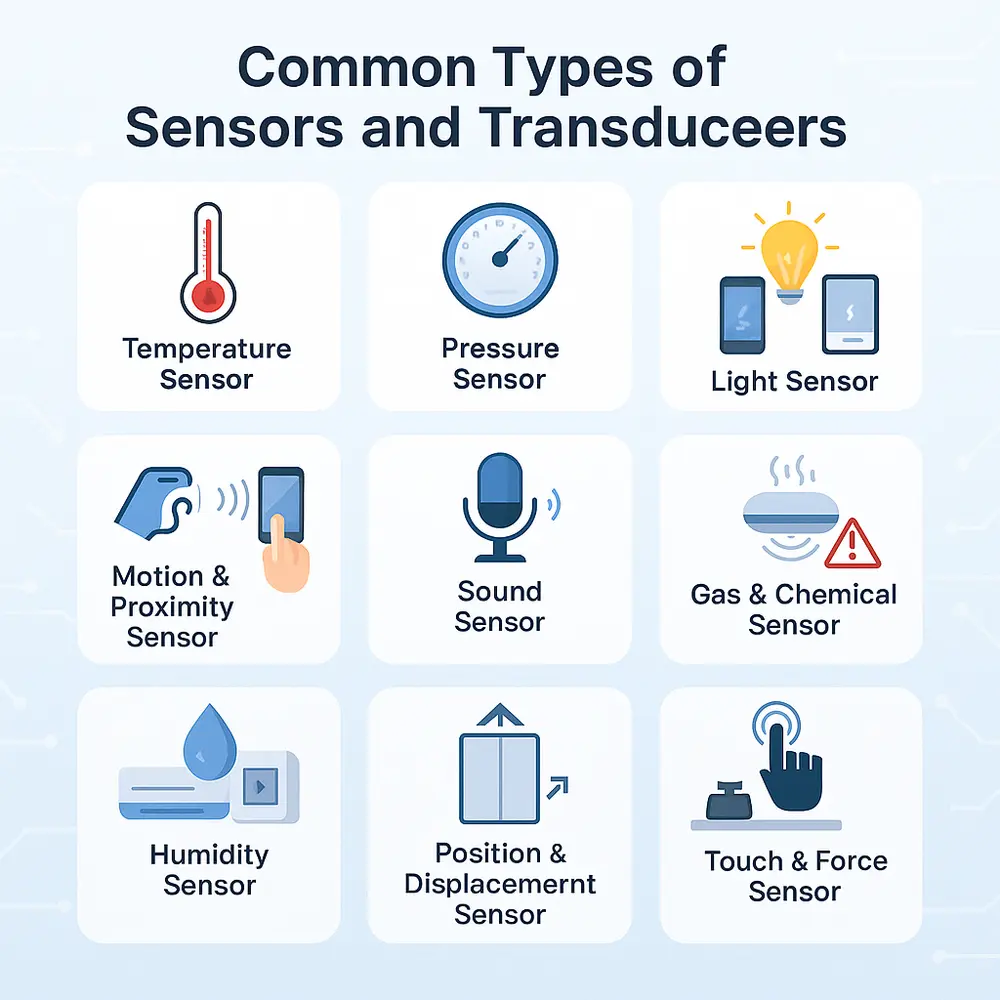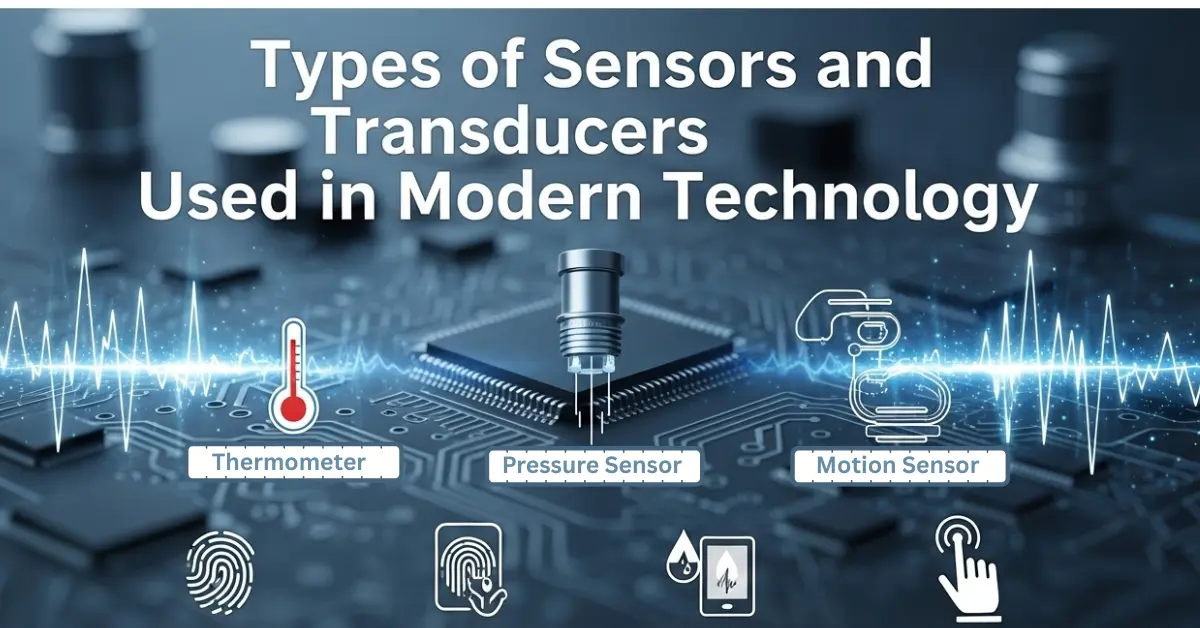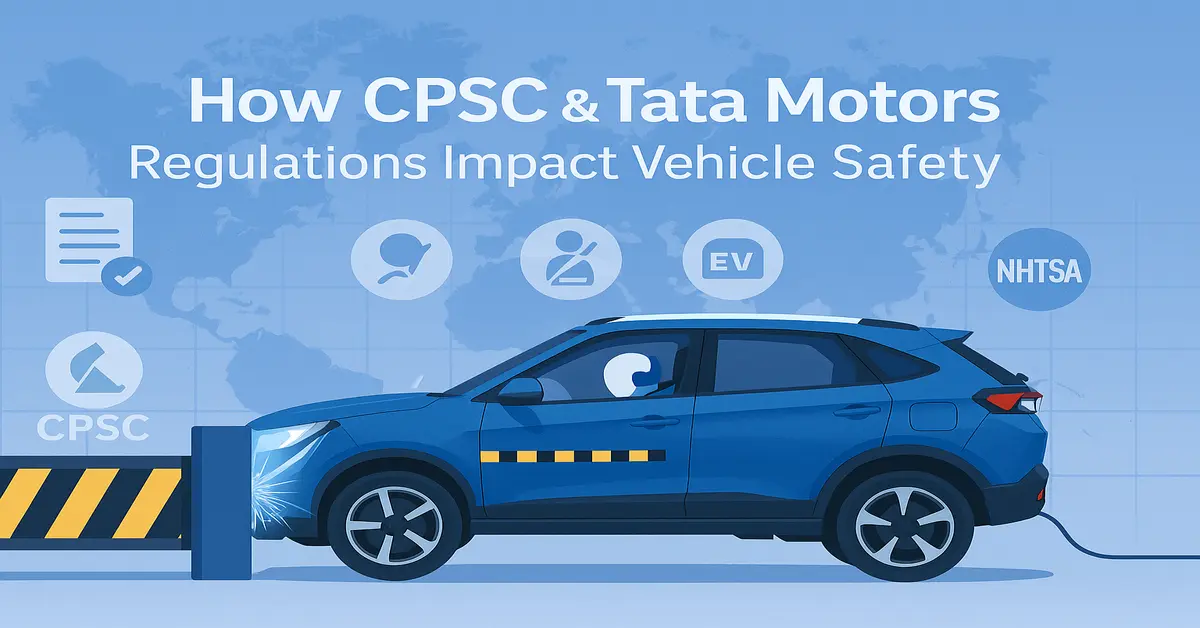In today’s fast moving world, technology is everywhere inside our homes, cars, hospitals, industries, and even in our pockets. At the heart of many smart systems are two powerful components: sensors and transducers. These small but essential devices help machines feel the world and respond to it.
What Are Sensors and Transducers?
Before diving into the types, it’s important to understand the difference between sensors and transducers. While people often use these terms together (or even interchangeably), they are not exactly the same.
- A sensor is a device that detects changes in the environment like temperature, light, sound, or pressure and turns that into a signal.
- A transducer is a broader term. It takes one type of energy (like heat or pressure) and converts it into another (usually electrical).
So, in simple words: A sensor senses. A transducer converts.
In many cases, a sensor is actually a part of a transducer system. For example, a temperature sensor inside a smart thermostat detects heat, and the transducer part converts it into an electrical signal the device can use.
Why Are They So Important?
From daily tasks to complex systems, sensors and transducers are the reason machines interact smartly with the world. These are some common areas where sensors and transducers are widely used:
- Home: smart lights, thermostats, smoke detectors
- Healthcare: heart rate monitors, body scanners
- Industry: machines that detect pressure, position, vibration
- Cars: parking sensors, tire pressure monitoring, airbags
- Phones: fingerprint readers, gyroscopes, proximity sensors
They help save energy, improve safety, increase comfort, and automate everyday actions.
Common Types of Sensors and Transducers

Now let’s explore some of the most widely used types of sensors and transducers, one by one.
1. Temperature Sensors and Transducers
These devices are designed to detect and measure temperature variations whether hot or cold within a system. You’ll find them in air conditioners, fridges, ovens, medical devices, and cars.
Examples include:
- Thermocouples: convert heat directly into voltage
- Thermistors: resist electricity based on temperature
- Infrared sensors: detect heat from a distance
These sensors play a vital role in regulating climate conditions, ensuring industrial safety, and enabling accurate medical temperature measurements
2. Pressure Sensors and Transducers
These devices measure the force exerted by gases or liquids. They’re used in vehicles, industrial machines, weather systems, and water pumps.
Types of pressure transducers include:
- Strain gauge sensors
- Piezoelectric sensors
- Capacitive pressure sensors
For example, your car’s tire pressure warning light is triggered by a pressure transducer.
3. Light Sensors and Transducers
Light sensors detect brightness or presence of light. They are everywhere from smartphones that dim screens automatically to solar garden lights.
Common light sensors:
- Photodiodes: convert light into electrical current
- LDRs (Light Dependent Resistors): change resistance with light levels
- Phototransistors
These are also used in motion detection, cameras, and street lighting systems.
4. Motion and Proximity Sensors
Motion sensors detect movement. Proximity sensors detect how close an object is. Together, they are widely used in security, mobile devices, and gaming.
Types include:
- Ultrasonic sensors: use sound waves to detect objects
- Infrared sensors: used in TV remotes and motion lights
- Capacitive sensors: used in touchscreens and contactless buttons
When your phone screen lights up as you move your hand near it, that’s a proximity sensor at work.
5. Sound Sensors and Transducers
Sound sensors are used to detect or measure sound levels. These are used in voice recognition systems, alarms, and music systems.
Common examples:
- Microphones: convert sound into electrical signals
- Piezoelectric buzzers: generate sound from electrical signals
In smart speakers like Alexa or Google Home, microphones are the key sound sensors.
6. Gas and Chemical Sensors
These sensors detect gases like carbon monoxide, methane, or even alcohol. They’re crucial in health and safety.
Examples include:
- MQ sensors: used in smoke and gas detectors
- Electrochemical sensors: common in air quality monitors
- Infrared gas detectors: used in industries
They help prevent accidents by giving early warnings about toxic gases.
7. Humidity Sensors
- These sensors detect moisture in the air. They are used in weather stations, AC systems, greenhouses, and food storage.
- These sensors function by monitoring changes in electrical resistance or capacitance that result from fluctuations in humidity levels
8. Position and Displacement Transducers
These are used in robotics, elevators, industrial automation, and car brakes to detect movement or position.
Examples include:
- LVDTs (Linear Variable Differential Transformers)
- Potentiometers
- Optical encoders
They help machines know where they are and how far they’ve moved.
9. Touch and Force Sensors
Touch sensors are commonly integrated into smartphone displays, self service kiosks, and automated teller machines (ATMs) to enable responsive user interaction. Force sensors are used in fitness equipment, robots, and manufacturing.
These devices help machines respond to physical pressure or touch just like our own skin.
Smart Sensors and the Future
Now we’re seeing the rise of smart sensors these don’t just detect and convert but also process data. Smart sensors can:
- Send data wirelessly
- Analyze data in real time
- Trigger automatic actions
- Work with apps or cloud systems
For example, a smart fitness band uses temperature, motion, and heart rate sensors together to track your health live. In factories, smart sensors help predict machine failure before it happens, reducing costs and accidents.
Final Thoughts
Behind every smart technology, sensors and transducers quietly do the heavy lifting. Whether it’s saving energy at home or guiding rockets in space, they play a vital role in making machines understand and respond to their surroundings. As the world becomes more connected and automated, the use of sensors and transducers will only grow. Knowing how they work and what types exist helps us better understand the smart tech all around us.



